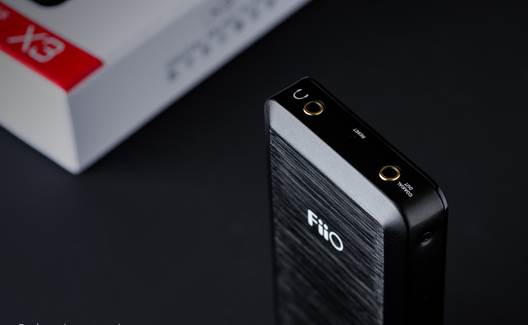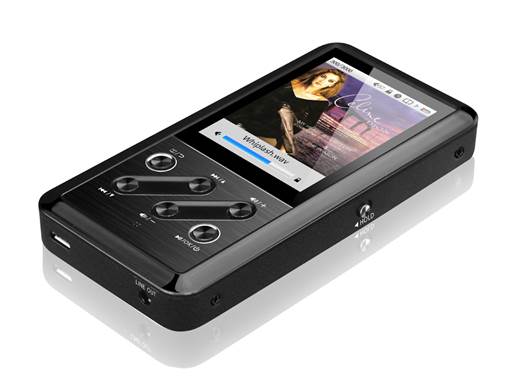The FiiO X3 has generated an awful lot of positive buzz –
Patrick Cleasby has a listen to see what the fuss is about
You might be forgiven for gaining the
impression, that there is really only one option when it comes to portable
digital players capable of 24/192 resolution – Astell & Kern. But it was
always only a matter of time before other players appeared.

Decidedly
old school, you won’t find any touchscreen operation here
Those in search of an alternative to the somewhat pricey
players from iRiver pricked up their ears when FiiO trailed the availability of
a more affordable unit using the same Wolfson WM8740 DAC. A similar frisson was
felt when it released an excellent portable headphone amp – the E17 – a year or
two ago. As ever the assiduous headphone listeners of head-fi.org were the
first to take note in both cases, anticipating and buying up the first X3
production runs, just as they had done with the E17. The device has the same
brushed black metal feel as the E17. There is no possible patent-infringing
click wheel – the vital navigation functions are fulfilled by pairs of buttons
arranged in pairs beneath the decent sized 240 x 320-pixel screen, lending a
slight design echo back to the old Sony Walkman 2 switchgear. The sides of the
device are also heavily populated. No shared phones/analogue/digital outputs
here, they are all separate and there is also an iPod-like hold button. The
micro USB connection is the typical USB 2.0 spec with a discreet red charging
LED concealed in the front panel close to the base of the device. Battery life
is a claimed 10 hours.
The contents of the package are extremely basic: there are
screen protectors, a silicon sleeve, a micro-USB lead and a 3.5mm-tophono
socket adapter for digital hookup. A leather case is available for $49. Replacement silicon skins for $8.
Comparisons with the lower price level Astell & Kern –
the AK100 – are inevitable and although it is slightly taller, the X3 is
notably lighter. The history of the firmware support for the X3 has also
tracked a similar path to that of its more expensive rival, in that the need
for gapless playback, and the promise of USB DAC capability have recently been
fulfilled with the v2.05 firmware. The X3 gets one over the AK100 as the DAC
functionality is fully 24/192 asynchronous spec, whereas it is capped at 24/96
on the Astell & Kern. An ASIO driver and a detailed setup guide is available
so PC users can take advantage of the DAC functionality.

The sides of the
device are also heavily populated
The areas in which the X3 loses out to the AK100 go some way
to explaining the significant disparity in price. Most notable is the step down
from a touchscreen paradigm to an entirely button-operated one – it is amazing
how much you miss this on the return. The onboard memory (8GB for the X3) and
single Micro SD upgrade slot are also less generous, giving less than half the
total possible capacity of the AK100 at 72GB with a single 64GB card. Getting
down to the little niggles, the card slot lacks the protective cover of the AK
100, but the latching action is smooth and doesn’t spring the all-too-loseable
tiny cards violently enough to cause anxiety on ejection. Finally, the absence of aptX should only upset those who are over-attached to
Bluetooth speaker setups.

It
plays just about every lossless music
I dutifully upgrade the shipped firmware to
the latest version before setting about auditioning. The update method is
booting from the firmware file on an SD card while holding the menu and power
buttons down. Happily the FAT32-formatted Sandisk Utra Micro SD XC 64GB cards I
use in the AK100 are accepted by the X3, so the auditioning material is
predominantly 24-bit FLAC from either HDTracks or Qobuz. Much like the AK100, a
scan needs to be triggered to pick up all the FLAC tagging information.